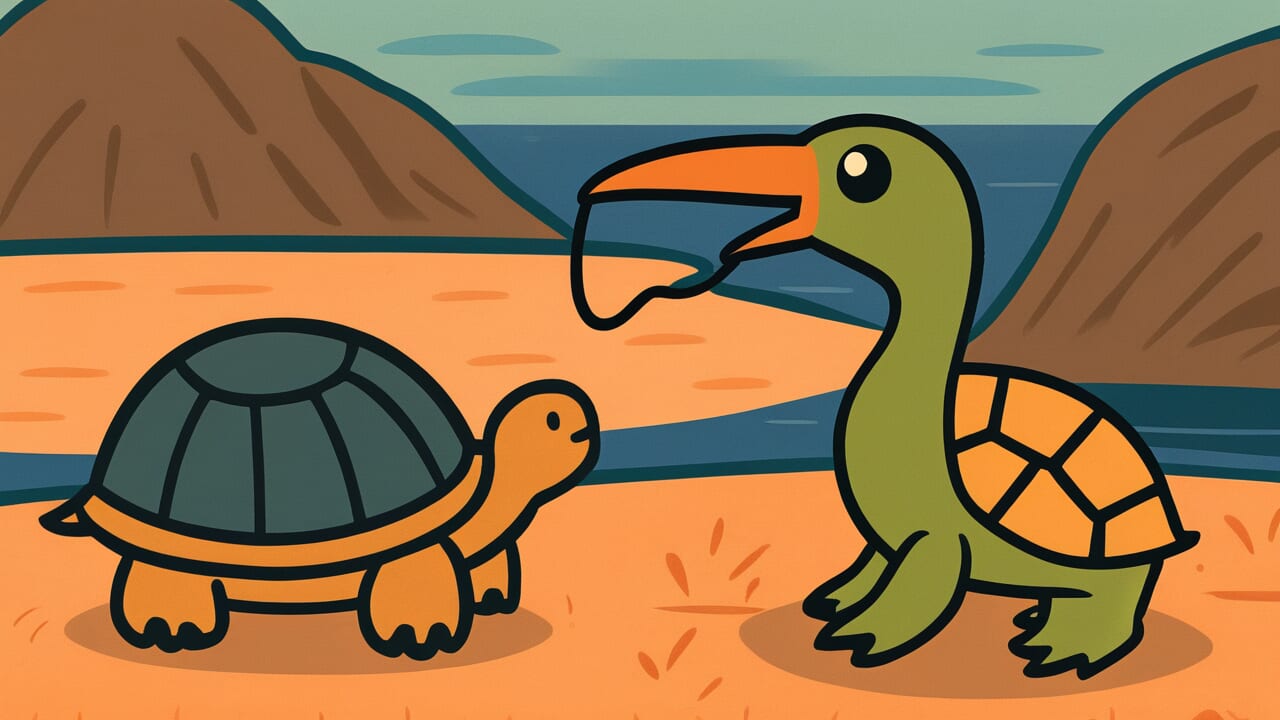How to Read “The crane envies the turtle’s years”
Kame no toshi wo tsuru ga urayamu
Meaning of “The crane envies the turtle’s years”
This proverb describes people who always want what they don’t have. Both cranes and turtles symbolize long life in Japanese culture.
Cranes are said to live a thousand years. Turtles are believed to live ten thousand years. Even the crane, with its impressive lifespan, envies the turtle’s even longer life.
The proverb shows how people who are already blessed still envy what others have. It applies when people focus only on what they lack, ignoring their own advantages.
This expression uses two animals that everyone recognizes as symbols of longevity. This makes it easy to understand human nature—how we struggle to feel satisfied even when we’re fortunate.
Today, social media lets us constantly see other people’s lives. We might be happy, yet still envy others. This proverb captures that feeling perfectly.
Origin and Etymology
No clear historical record explains where this proverb came from. However, we can understand its meaning through the words themselves.
In Japan, people have long said “cranes live a thousand years, turtles live ten thousand years.” Both animals appear at celebrations as symbols of good fortune and long life.
This proverb creates an unexpected relationship between these two lucky animals. The crane, living a thousand years, envies the turtle’s ten thousand years.
The clever part is this: both animals live incredibly long lives. Yet one still envies the other. This mirrors human psychology perfectly.
The proverb likely came from the familiar saying about cranes and turtles. Someone turned this celebration phrase into a gentle lesson about human nature.
It uses celebratory symbols to teach wisdom about satisfaction. This shows typical Japanese humor—light in tone but sharp in insight.
Usage Examples
- He and I both work at top companies, yet we envy each other’s workplace. It’s like the crane envies the turtle’s years.
- You both have excellent grades but envy each other’s best subjects. This is exactly what the crane envies the turtle’s years means.
Universal Wisdom
Humans have a strange quality. We often can’t recognize the value of what we already have. This proverb reveals exactly that truth.
Both the crane and turtle possess wonderful blessings. A thousand-year lifespan is unimaginably long from a human perspective. Yet the crane still envies the turtle’s ten thousand years.
This reflects a fundamental human psychology—our deep dissatisfaction with what we have.
Why can’t people feel satisfied with what they possess? Our attention constantly shifts to “what we don’t have.” The grass always looks greener on the other side.
Comparison itself highlights what we’re missing. It makes our lacking parts stand out sharply.
This proverb has survived through generations because this psychology is timeless. Standards of wealth change across eras, but the habit of comparing and envying remains constant.
In our information-rich modern world, we have infinite targets for comparison. This tendency might be stronger than ever before.
Our ancestors chose the perfect example—cranes and turtles, both symbols of longevity. Through them, they pointed out human nature with lightness and precision.
When AI Hears This
A biological hypothesis suggests that hearts beat roughly 1.5 to 2 billion times in a lifetime. Animals with faster heart rates use up their “allotment” more quickly.
A crane’s resting heart rate is about 150 beats per minute. During flight, it exceeds 300 beats. A turtle’s heart rate is only 20 to 40 beats per minute.
In the same amount of time, the crane’s heart beats nearly ten times faster than the turtle’s. The crane spins its “life counter” at ten times the speed.
Metabolic rate and lifespan are closely connected. Flight is one of the most energy-intensive activities in nature. Every time a crane soars, its cells consume massive amounts of oxygen.
More oxygen use creates more free radicals—substances that damage cells and accelerate aging. While the turtle lives an energy-efficient life underwater, the crane trades its graceful flight for rapid cellular wear.
The difference in lifespan isn’t just about species. It’s also about lifestyle choices. Live actively or live slowly—this is the fundamental dilemma.
This proverb touches on a biological truth. Outward beauty and biological sustainability don’t always align. The crane’s envy of the turtle is actually biologically rational.
Lessons for Today
This proverb teaches you to recognize the value of what you already have. This lesson matters deeply in modern life.
Every day, we see countless other people through social media and news. We constantly encounter someone’s success, someone’s happiness, someone’s talent.
Before we know it, we focus only on what we lack, not what we possess.
But stop and think for a moment. The person you envy might be envying something you have. Just as the crane envies the turtle, the turtle might envy the crane’s grace or ability to fly.
The point isn’t to stop comparing. That’s unrealistic. Instead, notice when you’re comparing. Each time, ask yourself: “What do I have right now?”
You have your own thousand years. It cannot be exchanged for anyone else’s ten thousand years. It’s irreplaceable and uniquely yours.
When you recognize your own richness, life becomes lighter and more fulfilling. This awareness changes everything.



Comments